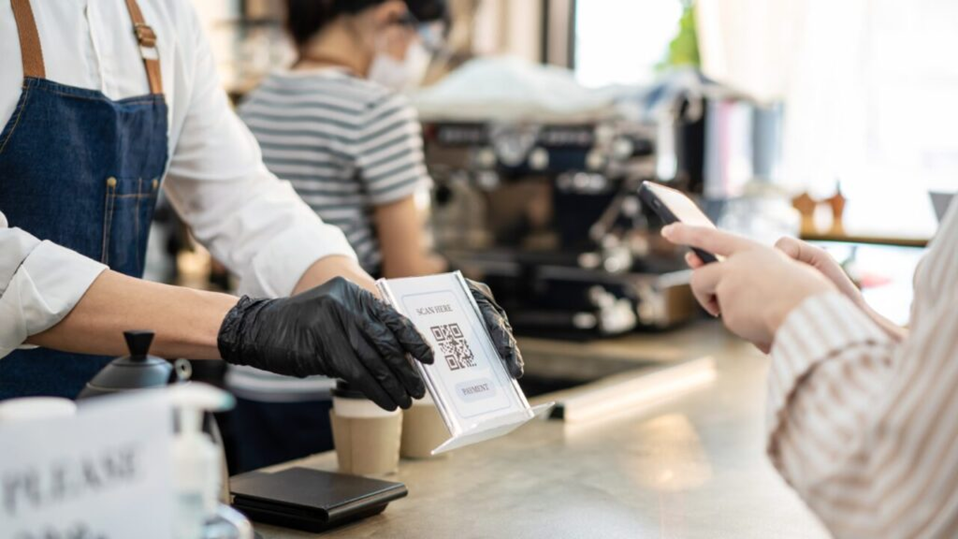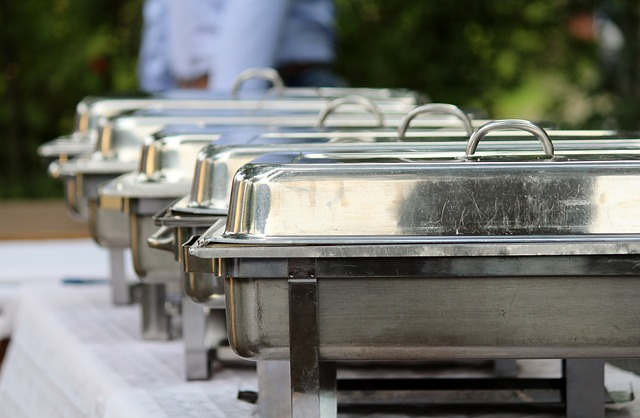
Setting the stage
The restaurant and entertainment scene feels as though it has experienced a trial by fire in recent years. But what are the restaurant business key trends that we can take away from 2022, and what can we expect from the future as digital technology becomes more viable with a full service restaurants business model? How will this affect our POS system in UAE and what relationship can we draw between our systems and the rise of self-service technology that restaurant owners must be grappling with?
As recently as March 2022, it was not possible to eat out or enjoy entertainment without a valid COVID certificate, this had a strong impact on how the Hotel/Restaurant/Catering (HoReCa) sector could attract customers and saw many restaurant owners struggle with food costs or increased supply chain pressure. With people having missed the social eating-out experience, last summer saw great success for catering businesses, event organisers and fine dining establishments as customers could return to a sit down restaurant.
In the meantime, the tradition of ordering food at home or using online food delivery, which had taken a very strong hold during the COVID-19 pandemic with younger generations, receded somewhat though it is unlikely this trend will ever truly disappear and make food delivery services redundant.
Trends observed prior to 2022 during the height of the COVID-19 pandemic
Online ordering for every restaurant

Restaurant food trends are nothing new and many restaurants were forced to reconsider their food offerings and explore in-depth delivery options that addressed the off premise demand many customers placed on restaurant chains. Online food delivery was one of the top restaurant trends that rose to prominence during this time period. Market forces have long considered digital ordering an inevitability, with services such as uber eats allowing customers fast food or healthy meals delivered to remote locations.
Restaurant business key trends in 2022
Prices are on the rise
The most important observable trends of the Hotel/Restaurant/Catering (HoReCa) sector in recent times have been, supply chain shortages coupled with increased energy, raw material, and labor costs. This has consequently led to a large price increase for customers, as what is offered on the menu is now twice as expensive as it was in years gone by. For an example relevant to our restaurants in Dubai, a shawarma sandwich which is considered a street food staple has almost double in price compared to few years ago.
It remains to be seen how customers will react to this price hike, will they refuse or will they continue to eat at increasingly more expensive venues? Maintaining a balance between customer satisfaction and rising costs will prove to be an unenviable balancing act for many restaurants. In any case, the uncertain economic situation affecting the world at large has made restaurant businesses hesitant to explore new business opportunities, despite the successful summer of 2022. Although, so far, a major wave of closures has not been observed and existing restaurants have even expanded to some extent, plans for new food establishments were generally shelved by the fall of 2022.
Customisation options for menu items
Preparing food and offering a variety of menu items are a fact of life when you work in the restaurant operation business. However, the customer is always right and one of the more recent restaurant food trends is the customisation of menu items requiring restaurants to pay close attention to how they prepare their food, based on consumer preference. This trend isn’t necessarily new or beyond the realm of management expectation, but it does represent an important change in the relationship between restaurants and their clients, which will continue evolve as newer trends like self-service establishments gain more prominence.
Virtual Restaurants are Starting to take market share
In 2022 the virtual brand was closely linked to previously discussed trends such as online orders, however there are some key distinctions. Firstly, we must ask ourselves, what is a virtual restaurant? A virtual restaurant, not to be confused with ghost kitchens which operates out of a space that is rented from a third party, is a restaurant that has an existing physical location and uses its own kitchen to create new delivery-only menus. Virtual restaurants cater to newer guest expectations and a demographic which favours online ordering to stay ahead of the competition in this time of market uncertainty. POS technology plays a significant role in virtual restaurants, ghost kitchens or dark kitchens. Restaurant industry trends are changing rapidly and business owners must adapt with the times if they want to survive. Investing in restaurant management systems technology is key to survive in this new market.
Labor problems are beginning to resolve themselves in the restaurant industry
In 2022, when the Hotel/Restaurant/Catering (HoReCa) sector experienced a long-awaited revival, especially at the onset of the Ukrainian-Russian war where the UAE became a refuge to hundreds of thousands or visitors, there was suddenly nowhere near enough cooks and servers available to hire for our partners in the F&B industry.
In the new year, the situation revolving around labor costs and labor-related issues will hopefully resolve itself. Firstly, new employees will have achieved a certain level of job proficiency during this time. Secondly, while it is to be expected that some restaurants and entertainment establishments will close their doors in the EU where our base is, due to the widespread economic difficulties, the UAE continues to grow as new concepts continue to emerge which adds a new level of diversity to the F&B, retail(check our retail POS system) and entertainment industry. As a result, we don’t expect the market in the UAE to be impacted like our peers in the EU.
Restaurant food trends and the technology around them
The trend of the future: self-service
Automation Offers New Avenues for Improvement

Building on the prior point, the cause of these unprecedented labor shortage can in part be traced back to the implementation of various self-service technologies, which is probably one of the most important trends to watch out for in 2023. Self-service solutions are an attractive proposition to restaurant operators looking to trim costs and can already be found in gas stations, cafes, cinemas, supermarkets, or even high-end restaurants.
Self-service in most of its various forms, be it when paying for food or going through ticket control with automated gates, requires a certain degree of technical readiness on the part of the operator. In the UAE the company Fintech FZE (which has been operating for more than 5 years now in the UAE) represents CompuCash POS, which has over 35 years of experience in the EU offers the best available self-service solutions in the fields of catering and entertainment, both in terms of software and equipment. In fact, Fintech FZE works closely with the leading virtual restaurant and ghost kitchen operator KITOPI which is already taking the virtual kitchen market by storm.
As a provider of Point of Sales (POS) systems we should pay close attention to these self- service developments as they could have a serious impact on how and who we develop our POS technologies for in the near future, if labor saving technology becomes the new standard. In the past two years, CompuCash POS has introduced new integrations with leading delivery aggregators like Deliveroo, Talabat, ChatFood, Careem and many others through Deliverect to facilitate client business, eliminate human error and save hundreds of staff working hours.
Delivery menu prices to rise as restaurants consider options beyond third-party partners to make the channel lucrative
Third party delivery partners have long been considered something of a necessary evil in the restaurant industry, one many are looking forward to overcoming. Costly third party partnerships sap the profit out of trendy online ordering establishments and leave many businesses looking to hike delivery menu prices for food delivery. But how can high-end eateries and the fast, casual restaurants counter this amidst the demand for food delivery from their target demographics? Is the answer to invest in their own delivery operators to maximise profitability, should they commence with shortening menus or perhaps a technological solution in the form of dynamic pricing schemes that charges customers for menu items based on factors such as delivery time or distance travelled?
Restaurant owners believe service providers must contribute added-value
In the UAE, where our business has stronger roots now and where what we call home, professions like that of a bartender or waiter is sometimes unfairly considered lacking the prestige of other jobs, and the usually low salaries play a part in this. As self-service spreads, the demands on service providers will probably increase in unexpected ways. Their role is will increasingly become that of an advisor, someone to recommend wines and create a dining mood.
If the job of a waiter is often considered temporary by the occupants, then by offering this greater added value, the role can become a more well recognised profession. As a result, the UAE will probably no longer be a country where people readily work for a small salary.
Upcoming Restaurant Trends: How To Combat Inflation And Boost Business Growth
The moment of truth for many restaurants is in March, but the impact on POS systems is uncertain
The end of last year did not bring about a wave of restaurant closures, but of course December is also an important month for restaurant owners. However, the high season months of January and February give small business owners a glimmer of hope that the UAE has been spared from the current global slowdown. Summer is the period when new restaurants and entertainment establishments usually open but its also a challenging season for businesses in the UAE and wider GCC region. Whoever survives the coming low season can normally expect growth again after the summer period ends when the country flourishes with millions of visiting tourists and expatriates coming back from their holidays. In the UAE especially, the service providers at restaurants and other fine dining establishments; the restaurant POS system providers will play significant role in helping these businesses become more efficient by rationalising their costs and maximising profits.
It could represent a new area for us in the Point of Sales (POS) system industry. We may need to invest in software and hardware solutions to accommodate the predicted demand for self-service establishments. It will be beneficial to envision a world where the responsibilities once placed on service providers become the domain of the customer in this and many other industries.


Pingback: Best ERP system examples 2022 | CompuCash
Pingback: How to open a food truck? | CompuCash
Pingback: Opening a Restaurant in Dubai? Here's What You Need to Know | CompuCash